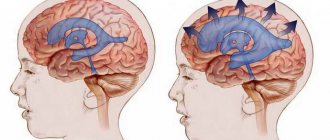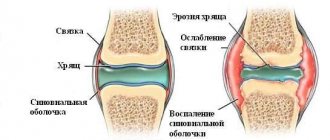Normal stool in an adult is always brown. The color of the stool is due to the presence of stercobilin, which enters the duodenum along with bile. With various diseases, stool can change color from bright yellow to green. The color, smell and consistency of stool reflect the general condition of the gastrointestinal tract. Black feces are always alarming and force us to analyze the reasons that could cause this condition.
Nutritional and drug causes
Why does stool turn black? What could this indicate? The factors causing dark-colored stools can be very commonplace.
This may be due to the consumption of certain foods or certain medications that turn the stool dark. If you stop using the dye, the color of the stool will normalize after a few days.
Darkening of feces can occur from eating prunes, beets, black currants, pomegranates, dark grapes, red wine, bloodwort, liver, tomatoes and blueberries. Even concentrated coffee can color your stool if you drink it in large quantities.
Dark-colored feces often occur when taking De-Nol, activated carbon, multivitamins (Elevit Pronatal, Pregnavit) and iron supplements (Maltofer, Tardiferron, Fenyuls).
When treating anemia with iron supplements, the doctor should warn the patient that, for example, Sorbifer or Maltofer tablets may cause black stool.
Most antibiotics (Ceftriaxone, Augmentin, Azithromycin) themselves do not cause dark stools in an adult. Antibiotic-associated diarrhea occurs more often with the use of these medications. However, very dark-colored stool may occur after taking antibacterial drugs such as Metronidazole or Levofloxacin.
Dark stools may be a result of Helicobacter pylori eradication therapy. To identify this bacterium, a breath test, PCR analysis of excrement, and a urease test during FGDS are performed. Helicobacter therapy includes proton pump inhibitors (omez), antibiotics and bismuth compounds, which cause darkening of stool.
If you are not sure whether a drug can cause a change in stool color in an adult, you need to clarify this fact in the instructions for the drug.
What do we have to do?
To restore the color of feces, a woman needs:
- give up foods and medications that allegedly caused the change in stool color;
- drink at least 2 liters of non-carbonated liquid per day;
- Maintain a balanced diet with sufficient amounts of proteins, fats and carbohydrates.
In cases where a change in stool color occurs due to a specific disease, the woman will definitely need the help of a gastroenterologist or hepatologist. Only doctors can prescribe the necessary medications to eliminate symptoms.
Blackened stool due to disease
Bleeding from the esophagus, stomach, duodenum is a common cause of black liquid stool in adults. Quite often, such stool is accompanied by symptoms of anemia, which causes dizziness and pallor. Up to 200 causes of bleeding from the gastrointestinal tract (GIT) have been identified. Diseases that can cause them:
- stomach ulcer,
- cirrhosis of the liver,
- gastritis,
- hepatitis,
- stomach cancer,
- ulcerative lesions of the intestine (Crohn's disease, ulcerative colitis),
- varicose veins of the esophagus.
Bleeding from the vessels of the esophagus can occur in people who abuse alcohol. To exclude dangerous gastrointestinal diseases, in medicine there are symptoms of “red flags”:
- rapid loss of body weight,
- constant severe abdominal pain,
- onset of the disease in an elderly person,
- temperature,
- blood in stool
- leukocytosis and increased ESR in the blood test,
- anemia,
- deterioration of biochemical blood parameters (AST, ALT, bilirubin, protein and others).
These manifestations in combination with dark stool are a reason to immediately consult your doctor! When taking nonsteroidal anti-inflammatory drugs (Diclofenac, Ibuprofen, and Aspirin) for a long time, it is necessary to periodically perform fibrogastroduodenoscopy in order to detect the formation of ulcers of the esophagus, stomach and duodenum in time.
Melena in children
Melena in children
Newborn children are exposed to true and false forms of the disease.
In the first case , black feces in a child appear due to hemostasis (poor blood clotting), accompanied by bleeding from the umbilical cord, subcutaneous hemorrhage, into the conjunctiva, etc.
In the second case , the change in feces is preceded by ingestion of blood during childbirth, sucking on cracked nipples, or damage to the mucous membrane of the nose or mouth.
In older children, a pathological change in stool to a dark color is the main symptom of bleeding of incomplete fusion of the Myckelian diverticulum. The release of blood can be massive, causing a sharp development of anemia.
Bleeding can be caused by:
the child has a diaphragmatic hernia; damage to the veins of the esophagus by varicose veins; infectious-allergic vascular pathologies; gastritis and intestinal and stomach ulcers.
The child must be urgently hospitalized. Until the cause of the bleeding is determined, he should not eat anything. Only short sips of cold water are allowed.
Types of black stool
The stool may be completely black or have dark inclusions such as strings and black spots (large, like grain, or smaller, like sand).
Several types of dark feces should be separately distinguished. Tarry stool (melena) is very dark, liquid stool that occurs when there is bleeding from the upper GI tract. The stomach is the most common location of bleeding. There, the blood turns black under the influence of hydrochloric acid. In this case, loose stool turns charcoal in color, becomes sticky and smelly.
If there is bleeding from the lower gastrointestinal tract (hemorrhoids, anal fissure), the feces will not take the form of melena, and the main symptom will be streaks of scarlet blood in brown stool.
Black dots in an adult's stool may look like grains or be in the form of grains of sand. They arise due to the consumption of berries with small grains (blackberries, mulberries).
Black-green stool may appear due to poisoning. At the same time, the temperature rises and signs of intoxication appear. There may be stool containing mucus or undigested food particles.
Dark stool after surgery can occur during surgical interventions in the esophagus, stomach and intestines. If black stool appears after other operations, this may indicate internal bleeding. Black strings in stool may be a result of eating bananas. Such rods disappear from human feces after 2-3 days.
Black feces after alcohol occur as a result of bleeding from damaged veins of the esophagus. This occurs after severe vomiting (Mallory-Weiss syndrome). This syndrome occurs more often in men. The formation of hematemesis or melena after drinking alcohol requires emergency medical attention.
When should you see a doctor?
You should seek medical help when other symptoms are present along with a change in the color of the stool:
- vomiting begins;
- body temperature rises;
- shortness of breath occurs;
- absent or increased appetite;
- the skin turns pale;
- heart rate increases;
- weakness, fatigue, cold sweat appears.
If there are no such symptoms, then there is no need to worry. Changes in stool color are considered a natural occurrence after childbirth.
Loading…
Share with friends!
Dark stool due to constipation
Constipation is more common in women, bedridden patients and the elderly due to decreased intestinal tone.
They can also occur due to poor nutrition, when taking medications, and after removal of the gallbladder. Constipation causes stools to become hard, dry, and dark because it takes longer for water to be absorbed from the gastrointestinal tract. If there is mucus on the stool, this is a sign of an inflammatory disease of the sigmoid or rectum. The reasons for the appearance of black stool in pregnant women may be: slow, difficult bowel movements, taking multivitamin preparations and iron compounds.
If constipation continues for a long time, it can cause anal fissure. In this case, scarlet blood may appear in the stool or on toilet paper.
What measures need to be taken?
As practical activity shows, determining the cause of black feces precedes the implementation of measures to treat it. If there is a connection between the occurrence of black feces under the influence of drugs, treatment is not required. If it is necessary to stop the medication treatment process, including not consuming coloring foods, black stool color is not a negative symptom for the body.
Black stool is not dangerous, however, it can be a signal of significant problems in the body, and in some cases may indicate the presence of a condition that can lead to death.
Thus, we have determined why stool is black and in what diseases this occurs. In this regard, a person must constantly monitor what food he eats, the effect of medications, and most importantly, his state of health.
Evidence suggests that black stool caused by food and medications is not dangerous. However, if additional signs are present, it may indicate an existing disease.
Additional examination methods
What to do if black stool appears without an objective reason? If you are sure that the reason for the change in the color of your feces is not due to food or medication, then you should consult a doctor. To determine the causes and treatment, the following tests are prescribed:
- Coprogram. The naked eye evaluates the color of the stool, mucus and pieces of undigested food. Small inclusions in the stool, such as villi or strings, can also be detected. This method allows you to detect altered red blood cells in the stool using a microscopic examination - a sign of bleeding from the gastrointestinal tract.
- Analysis of stool for dysentery group with determination of sensitivity to antibiotics. If black or dark green feces appear, diarrhea, fever and stomach pain, these are symptoms of an infectious disease (shigellosis, salmonellosis).
- Stool test for occult blood (Gregersen test or ICA). Prescribed when the color of the stool is normal, if there is a sign of internal bleeding. A week before the test, you must follow a special diet, which means excluding meat, liver, fish and tomatoes. Avoid the use of oral medications (bismuth, iron). Do not brush your teeth for 3 days before the test.
- Complete blood count with leukocyte formula. Tarry stool indicates heavy bleeding, which is accompanied by clinical signs of anemia (pallor, shortness of breath) and changes in blood tests: the level of hemoglobin and hematocrit becomes less than normal.
Dark stool is not always a sign of any disease. But this symptom cannot be ignored. In an adult, the causes can vary widely: from completely harmless to life-threatening. Treatment with folk remedies is often used in the treatment of diseases of the stomach (gastritis, ulcers) and liver. However, if there are complications (especially bleeding), the patient must be treated with medications or even surgical methods.
(
1 ratings, average: 5.00 out of 5)
Diagnostics
It is necessary to undergo diagnostics if black feces are detected only if you yourself have not been able to find out why the color of the feces has changed, and additional symptoms indicated above have appeared. Then the patient urgently needs to undergo examinations of the internal organs of the gastrointestinal tract using CT, MRI, swallowing a probe with a camera at the end, radiography, and should also undergo blood tests. These methods will help determine what pathological processes are occurring in the body and identify internal bleeding.
If the cause of darkening of the stool is high calorie foods, fruits, vegetables, prunes or medications, you must refrain from eating them for several days, and the discharge will return to its normal color.











